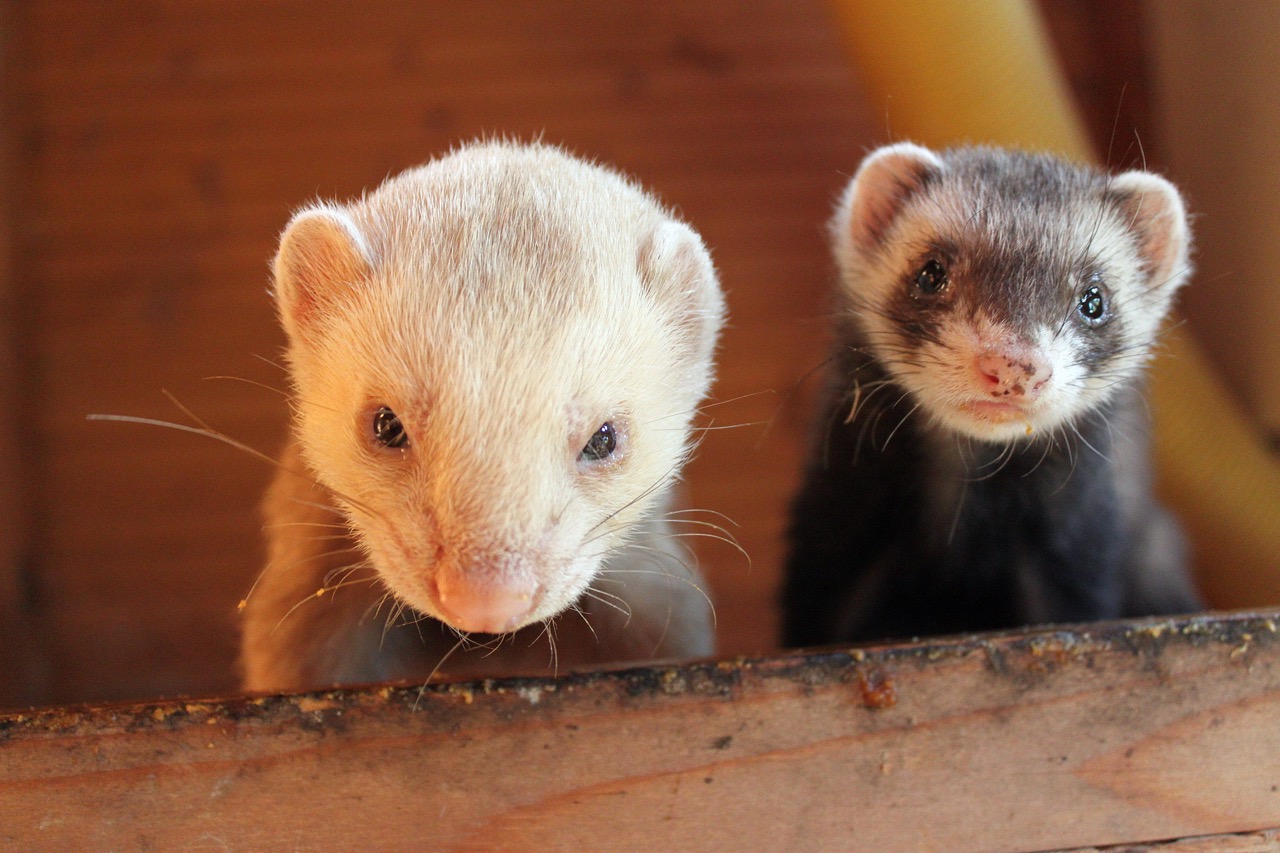Designing a ferret cage that is both fun and practical is essential for the well-being and happiness of your furry friend. Ferrets are lively, curious creatures that require ample space to explore, play, and rest. A well-designed cage can provide a safe environment while also stimulating their natural instincts. In this article, we’ll explore the fundamental needs of ferrets, essential features to include in your cage design, creative enrichment ideas to keep them entertained, and maintenance tips to ensure a functional setup.
Understanding Ferret Needs for a Happy Habitat
Ferrets are social animals that thrive in an environment that allows them to engage in their instinctual behaviors. As part of the weasel family, they are naturally curious and require a space that encourages exploration and interaction. A happy habitat should reflect these needs by being spacious enough to allow for movement and play, as well as providing safe hiding spots and climbing opportunities. It’s crucial to consider their social nature; ferrets often do well with companions, so if possible, housing multiple ferrets in one cage can enhance their happiness.
Temperature and ventilation are also significant factors in ferret care. Ferrets are sensitive to heat and can suffer from heatstroke if their environment becomes too warm. The cage should be in a cool, well-ventilated area, away from direct sunlight or drafts. Additionally, ferrets need a consistent day-night cycle, so it’s important to position the cage in a space where they can experience this natural rhythm. Lighting should be adjustable to cater to their active hours, usually dawn and dusk.
Lastly, ferrets are prone to boredom, which can lead to destructive behavior. Understanding their need for stimulation means recognizing the importance of incorporating various activities and spaces within the cage. The design should not only meet their physical needs but also offer a variety of experiences that challenge their intellect and keep them engaged. A productive, fun habitat allows ferrets to express their natural behaviors, creating a happier and healthier pet.
Essential Features of a Ferret-Friendly Cage Design
When designing a ferret cage, size is one of the most critical factors. A spacious environment is necessary, as ferrets are highly active and need room to move freely. The minimum recommended space for a single ferret is 24 inches wide, 24 inches deep, and 36 inches tall, but larger is always better—especially if you plan to have more than one ferret. Multi-level cages with ramps and platforms can maximize vertical space and offer more play areas for your pets to explore.
Securing the cage is another essential feature. Ferrets are notorious escape artists, so a cage with properly fitted doors and secure latches is vital. The bars should be spaced closely enough to prevent escapes—ideally no more than 1 inch apart. Additionally, the cage should be constructed from safe, non-toxic materials that can withstand chewing and scratching. Avoid using wire floors, as these can be harsh on their paws; instead, opt for solid flooring that can be covered with soft bedding for comfort.
Finally, ensure that the cage is easy to clean. Ferrets are known for their playful nature, but they can also be messy. Providing removable trays or a solid bottom that can be easily wiped down will help maintain hygiene. Build in access points for cleaning, such as removable panels or large doors, to make it convenient for you to keep their home tidy. A practical cage design is not only comfortable for your ferret but also simplifies your maintenance efforts.
Creative Enrichment Ideas for Your Ferret’s Space
Enrichment is key to keeping your ferret stimulated and happy. Incorporating tunnels and tubes is an excellent way to encourage exploration and play. Ferrets love to burrow and hide, so providing various hiding spots within the cage can help satisfy their instincts. Consider using cardboard boxes, small pet tents, or even ferret-specific hammocks that they can climb into and rest. Rotating these items regularly can keep the environment fresh and exciting.
Interactive toys are another great way to enhance your ferret’s cage. Toys that challenge their intellect, such as puzzle feeders or treat-dispensing balls, can provide both mental stimulation and exercise. Ferrets enjoy toys that mimic their natural hunting instincts, such as small plush toys or balls that they can carry and toss around. Just be sure to monitor their toys for wear and tear, as safety is always a priority.
Additionally, creating a safe outdoor play area or a designated “playpen” outside of the cage can provide ferrets with more space to explore under supervision. This area can be filled with tunnels, climbing structures, and various toys to keep them entertained. This change of scenery can help prevent boredom and provide essential mental and physical exercise. Always supervise your ferrets during these play sessions to ensure their safety and prevent any potential escapes.
Maintenance Tips for a Functional Ferret Cage Setup
Keeping a ferret cage clean is crucial for your pet’s health and well-being. Regular cleaning helps prevent odors and the build-up of waste, which can lead to potential health issues. It’s advisable to spot-clean the cage daily by removing soiled bedding and uneaten food. A thorough cleaning should be done at least once a week, which includes washing the cage, food dishes, and toys with pet-safe cleaners. Ensure that everything is thoroughly rinsed and dried before reintroducing your ferrets to their space.
Bedding is a significant aspect of cage maintenance. Choose absorbent and soft bedding materials like fleece or soft blankets that can be easily washed. Avoid cedar or pine shavings, as these can be harmful to ferrets’ respiratory systems. Regularly changing the bedding will not only maintain a fresh environment but also help you keep track of your ferret’s health by revealing any changes in their waste.
Lastly, ensure that food and water are always fresh and accessible. Regularly check and refill water bottles or bowls, as dehydration can be a serious issue for active pets. Invest in heavy, spill-proof dishes to prevent messes and ensure that food remains clean. Monitoring your ferret’s eating habits can also provide insight into their health; sudden changes in appetite or water consumption can prompt a visit to the veterinarian. By maintaining a clean and organized living space, you are ensuring a happy, healthy habitat for your ferret.
Designing a ferret cage that is both fun and practical requires a careful balance of understanding their needs, incorporating essential features, and providing enrichment. By prioritizing your ferret’s natural behaviors and ensuring their habitat is clean and inviting, you can create a space where they can thrive. Remember, a well-designed cage is not just a home; it’s a sanctuary for your ferret to explore, play, rest, and enjoy their life with you. Investing time and effort into their environment will lead to a happier, healthier, and more fulfilling life for your adorable companion.










